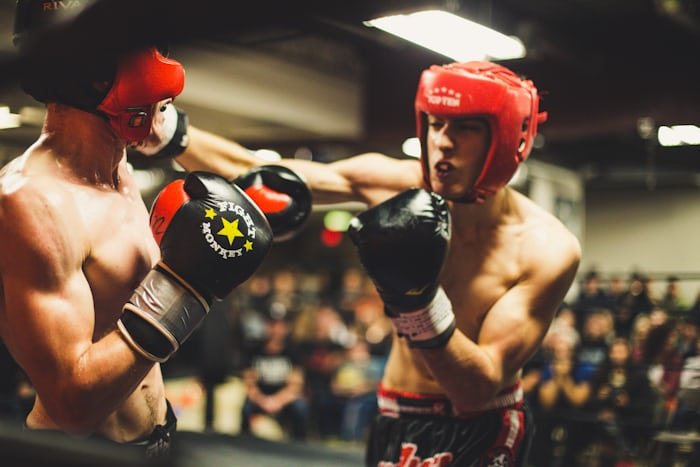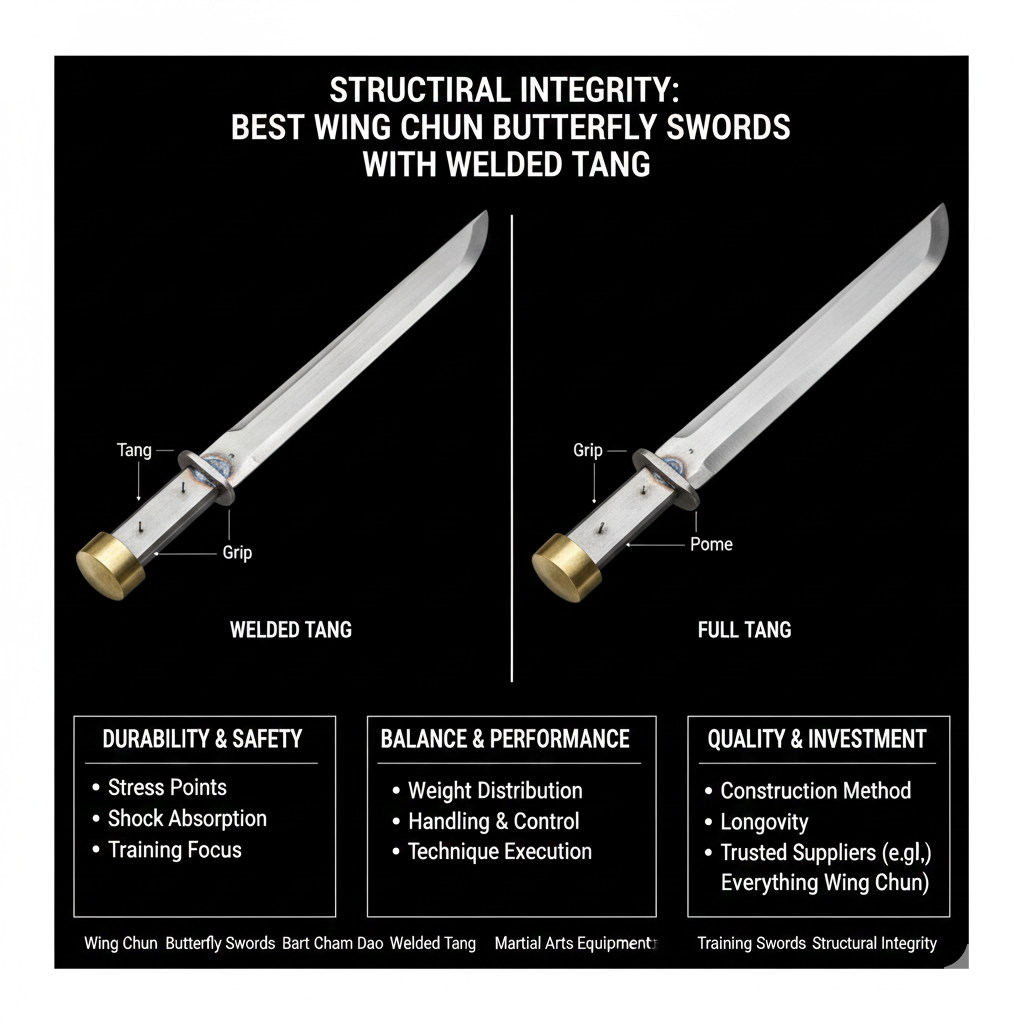Full contact martial arts competitions represent some of the most challenging and physically demanding contests in the world of sports.
These events are characterized by intense physical engagement where participants use a wide array of techniques to overcome their opponents.
Unlike other martial arts competitions that may emphasize form, technique, or point scoring with minimal contact, full contact events prioritize direct, unrestrained combat.
Several martial arts disciplines are commonly involved in full contact competitions.
Among the most prominent are Muay Thai, Brazilian Jiu-Jitsu, Kickboxing, and Mixed Martial Arts (MMA).
Each of these disciplines brings its own unique set of rules, techniques, and strategies.
But they all share a common goal: to test the combatants’ skills in a realistic fighting scenario.
The diversity of these martial arts ensures a comprehensive and versatile approach to combat, attracting a wide range of athletes with various backgrounds and strengths.
The nature of full contact martial arts competitions is inherently intense.
Fighters must possess not only physical strength and endurance but also mental toughness and strategic acumen.
It is a true test of an individual’s ability to perform under pressure, endure pain, and outthink their opponent in a high-stakes environment.
This combination of physical and mental challenges is what makes these competitions so compelling to both participants and spectators.
The popularity of full contact martial arts competitions has grown significantly over the past few decades.
With the rise of global events such as the Ultimate Fighting Championship (UFC) and the proliferation of martial arts gyms worldwide, these competitions have garnered a massive following.
The global reach of these events is evident, with broadcasts and live streams available to audiences in numerous countries, making full contact martial arts a truly international phenomenon.

Types of Full Contact Martial Arts
Full contact martial arts encompass a wide range of disciplines, each with distinct characteristics and historical backgrounds.
Among the most prominent forms are Muay Thai, Kickboxing, Mixed Martial Arts (MMA), Karate, and Taekwondo.
These styles not only differ in techniques and philosophies but also in how they are adapted to full contact competition.
Muay Thai, often referred to as the “Art of Eight Limbs,” utilizes punches, kicks, elbows, and knee strikes.
Originating from Thailand, it is known for its rigorous training regimes and effectiveness in both sport and self-defense.
Muay Thai fighters are trained to deliver powerful strikes and withstand significant physical stress, making it a cornerstone of full contact martial arts.
Kickboxing, which has roots in Karate and Muay Thai, combines elements from various striking arts.
It is characterized by its emphasis on punches and kicks, often excluding the elbow and knee strikes prominent in Muay Thai.
Kickboxing competitions are held globally, with rulesets varying slightly between organizations, but the focus remains on striking prowess and speed.
Mixed Martial Arts (MMA) is a hybrid sport incorporating techniques from numerous martial arts, including Brazilian Jiu-Jitsu, Wrestling, Muay Thai, and Boxing.
MMA fighters must be well-versed in both striking and grappling to succeed in the octagon or ring.
This versatility makes MMA one of the most comprehensive full contact martial arts, with a broad appeal to practitioners and spectators alike.
Karate, with its origin in Japan, is known for its disciplined approach and emphasis on striking techniques, such as punches, kicks, and knee strikes.

While traditional Karate focuses on form and precision, full contact Karate competitions, such as Kyokushin, emphasize powerful strikes and endurance, with minimal protective gear.
Taekwondo, originating from Korea, is distinguished by its dynamic kicking techniques and agility.
Full contact Taekwondo competitions, such as those governed by the World Taekwondo Federation (WTF), involve continuous sparring with an emphasis on scoring points through clean, impactful strikes, particularly with the feet.
Each of these martial arts brings unique elements to full contact competition, offering a diverse range of techniques and strategies for practitioners to explore and master.
Understanding the nuances of these styles not only enriches one’s appreciation of full contact martial arts but also aids in the development of a well-rounded skill set for competitive success.
Weight Classes and Divisions
Weight classes and divisions play a pivotal role in full contact martial arts competitions.
These categories are essential for ensuring that matches are fair and safe, as they help to balance the physical attributes and abilities of competing athletes.
Without such classifications, the risk of injury would be significantly higher, and the integrity of the sport could be compromised.
Weight classes are determined based on the athlete’s weight at the time of weigh-in, which typically occurs a day before the competition.
This allows organizers to group fighters with similar body mass, minimizing the physical discrepancies that could otherwise give one competitor an undue advantage.

Different martial arts organizations may have varying weight class structures, but they generally follow a similar framework.
For instance, in sports like boxing and mixed martial arts (MMA), weight classes range from lighter divisions like flyweight to heavier divisions such as heavyweight.
Divisions within these weight classes further categorize athletes by gender and age, ensuring a higher level of fairness.
People of all genders, the weight classes are often similar, though the weight range may vary slightly to accommodate physiological differences.
Youth divisions are also critical, as they take into account the developmental stages of younger athletes, thus promoting safety and appropriate competition levels.
For instance, in MMA, men’s weight classes typically include flyweight (up to 125 lbs), bantamweight (126-135 lbs),
- Featherweight (136-145 lbs),
- Lightweight (146-155 lbs),
- Welterweight (156-170 lbs)
- Middleweight (171-185 lbs),
- Light heavyweight (186-205 lbs),
- And heavyweight (206-265 lbs).
Women’s divisions might include similar classes but with adjusted weight ranges.
Youth divisions are usually more flexible and focus on both weight and age to ensure the competitors are evenly match.
Overall, the establishment of weight classes and divisions is a fundamental aspect of full contact martial arts competitions.
Providing a structured environment where athletes can compete on a level playing field.
This systematic approach underscores the importance of fairness and safety.
Which are paramount to the sport’s integrity and the well-being of its participants.
Protective Gear and Equipment

In full contact martial arts competitions, the use of protective gear and equipment is paramount to ensuring the safety and well-being of the participants.
The mandatory protective gear includes items such as gloves, mouth-guard s, shin guards, and groin protectors.
Each serving a critical role in preventing injuries and maintaining the integrity of the sport.
Gloves are indispensable in full contact martial arts.
As they cushion the impact of punches and strikes.
Thereby reducing the risk of hand and facial injuries.
They are design to protect both the attacker and the opponent.
Ensuring that the force of the blows is distribute evenly.
Properly fitted gloves are a requirement for all competitors.
With varying weights and sizes to accommodate different weight classes and fighting styles.
Mouthguards are another essential piece of equipment.
They protect the teeth, gums, and jaw from the force of impacts.

Which can occur during strikes, falls, or grappling.
A well-fitted mouth-guard can prevent serious dental injuries and concussions.
Athletes are generally encourage to use custom-fit mouth-guard for optimal protection and comfort.
Shin guards are crucial for safeguarding the lower legs during kicks and blocks.
These guards absorb the brunt of the impact, minimizing the risk of fractures and bruises to the shins and feet.
High-quality shin guards offer a balance of protection and mobility.
Allowing fighters to engage in their techniques with confidence.
Groin protectors are mandatory in full contact martial arts to shield one of the most vulnerable areas of the body.
These protectors are design to absorb and disperse impact.
Thus preventing serious injuries to the groin area.
Both male and female fighters is require to wear appropriate groin protection, tailored to their anatomical needs.
In conclusion, the use of protective gear and equipment in full contact martial arts competitions is non-negotiable.
These items not only protect the fighters from potential injuries but also contribute to the overall safety and fairness of the sport.
Proper usage and maintenance of this gear are essential for any athlete aiming to compete at their best while minimizing the risk of harm.
Scoring and Judging Criteria
In full contact martial arts competitions, scoring and judging criteria are pivotal in determining the winner of a match.
The point system is at the core of this process, with judges awarding points based on a variety of factors including technique, aggression, defense, and effective striking.
Technique is highly value in these competitions.
Where clean and precise movements can earn significant points.
Judges look for the execution of moves that demonstrate control, skill, and adherence to the sport’s regulations.
Aggression, too, plays a crucial role in scoring.
Competitors who take the initiative and maintain an offensive stance often gain favor, as long as their aggression is control and purposeful.
Defense cannot be overlook and is equally important.
Effective defensive maneuvers, such as blocks, parries, and counters, are recognize and rewards.
A competitor’s ability to anticipate and neutralize an opponent’s attack showcases strategic prowess and is integral to the scoring process.

Effective striking, encompassing both the power and accuracy of hits, is another critical aspect.
Strikes that land cleanly and forcefully has value higher than those that are merely glancing or partially blocked.
Judges use a combination of these criteria to tally points throughout the match.
Each judge may have their scorecard, and the aggregate of these scores determines the winner.
However, matches may sometimes end without a clear victor, resulting in a draw or tie.
In such cases, additional rounds may be conduct, or the match may be decided based on other predefine tiebreaker criteria.
Such as the number of knockdowns or the overall impression of dominance during the match.
Understanding the intricate scoring and judging criteria is essential for both competitors and spectators alike.
It ensures clarity and appreciation of the skills and strategies that define full contact martial arts competitions.
Fouls and Penalties
In full contact martial arts competitions, maintaining the integrity of the sport requires stringent adherence to rules regarding fouls and penalties.
Fouls can significantly impact the outcome of a match.
And understanding these violations is crucial for both competitors and spectators.

One of the primary categories of fouls includes illegal moves.
These are techniques or actions that are forbidden due to their potential to cause undue harm or offer an unfair advantage.
Examples of illegal moves can include strikes to the back of the head, attacks on joints, or the use of elbows in certain contexts.
Each martial arts discipline has its own set of specified illegal moves, tailored to the nature and objectives of the sport.
Unsportsmanlike conduct is another significant category of fouls.
This encompasses a wide range of behaviors that violate the spirit of fair play.
Instances of unsportsmanlike conduct may include taunting, excessive celebrations.
Or disrespect towards opponents, officials, and spectators.
Such behavior not only undermines the respect integral to martial arts but also disrupts the decorum of the competition.
Other rule violations can include actions like grabbing the opponent’s protective gear, biting,
Or failing to break when ordered by the referee.
Each of these actions is seen as a breach of the rules has been designed to ensure a fair and safe competition environment.
Referees play a pivotal role in enforcing these rules.
They are train to identify and penalize fouls promptly and accurately.
Penalties for committing fouls can vary depending on the severity and frequency of the infractions.
Minor infractions might result in warnings.
While more severe or repeated offenses can lead to point deductions, disqualification, or suspension from future matches.
The enforcement of fouls and penalties is integral to maintaining the balance between competitiveness and safety within full contact martial arts.
By upholding these rules, referees ensure that matches are contest fairly and with respect, preserving the essence and honor of the sport.
Match Formats and Duration
Full contact martial arts competitions has been structured in various formats to accommodate the diverse range of martial arts disciplines and competition levels.
One of the most common formats is the single elimination format.
Sometimes competitors face in one-on-one matches, and the loser is immediately eliminates from the tournament.
This type of format is widely use in events like kickboxing and mixed martial arts (MMA) due to its straightforward and decisive nature.
Another popular format is the round-robin style.
In which each participant competes against every other participant at least once.
This format ensures that each competitor has multiple opportunities to showcase their skills and strategies.
Providing a comprehensive assessment of their abilities.
Round-robin is frequently utilize in amateur and youth competitions.
Where the emphasis is on gaining experience and exposure.
Tournament styles, which often combine elements of both single elimination and round-robin formats, are also prevalent in full contact martial arts.
These tournaments typically begin with a round-robin phase to determine seeding.
Followed by a single elimination phase to crown the ultimate champion.
This hybrid approach balances fairness with the excitement of knockout rounds.
The duration of matches in full contact martial arts competitions varies based on the specific discipline and governing body rules.
For instance, professional MMA bouts generally consist of three to five rounds, each lasting five minutes.
In contrast, amateur MMA matches might have shorter rounds, typically two to three minutes in length.
Kickboxing matches usually feature three rounds of three minutes each.
While traditional martial arts like karate and taekwondo might have even shorter rounds, often lasting two minutes.
Additionally, the number of rounds per match can differ based on the competition level.
Championship bouts in professional leagues often extend to five rounds.
Whereas preliminary and non-title fights are usually limiting to three rounds.
Amateur competitions may further reduce the number of rounds to ensure the safety and endurance of less experienced fighters.
Understanding these various match formats and durations is crucial for both competitors and spectators.
As it enhances appreciation of the strategic and physical demands inherent in full contact martial arts.
Training and Preparation for Competitions
Preparing for full contact martial arts competitions demands a comprehensive and rigorous training regimen.
Fighters undergo intense physical conditioning to build strength, endurance, and agility.
That are essential components for success in the ring.
This conditioning often includes a combination of cardiovascular exercises, weight training, and flexibility workouts.

The goal is to create a well-rounded athlete capable of enduring the physical toll of a full contact match.
Furthermore, technique improvement is a critical aspect of training.
Martial artists spend countless hours perfecting their strikes, grapples, and defense mechanisms.
This involves repetitive drills, sparring sessions.
And analyzing match footage to identify areas for improvement.
The emphasis is on developing precision, speed, and power in every movement.
Fighters must also adapt their techniques to counter various fighting styles.
Ensuring they are prepare for any opponent.
Mental preparation is equally vital in the lead-up to a competition.
Athletes often engage in visualization techniques, meditation.
And other psychological strategies to enhance focus, build confidence, and manage stress.
Mental fortitude can be the difference between victory and defeat.
As staying composed under pressure is crucial in full contact martial arts.
The role of coaches and support teams cannot overstate in an athlete’s preparation.
Coaches provide not only technical guidance but also strategic insights tailored to the fighter’s strengths and weaknesses.
They design personalized training programs and offer real-time feedback during practice sessions.
Additionally, support teams, which may include nutritionists, physiotherapists, and sports psychologists.
Play a significant role in ensuring the athlete is in peak physical and mental condition.
These professionals help optimize the fighter’s diet, recovery, and overall well-being.
Contributing to a holistic approach to competition readiness.
In conclusion, the preparation for full contact martial arts competitions is a multifaceted process that encompasses physical conditioning, technique refinement, and mental fortitude.
With the dedicated support of coaches and specialized teams.
fighters can enter the ring fully equipped to face the challenges ahead.



